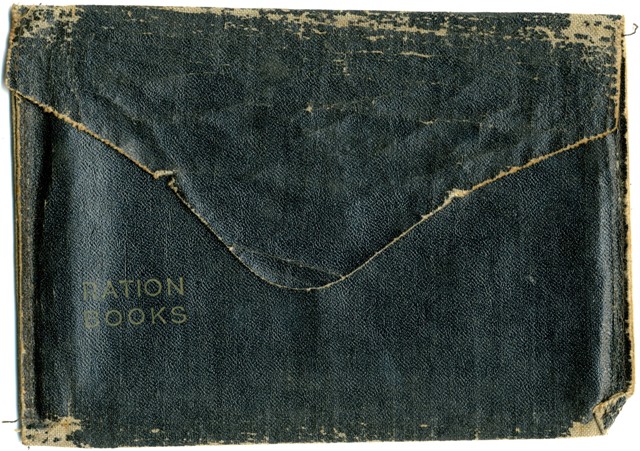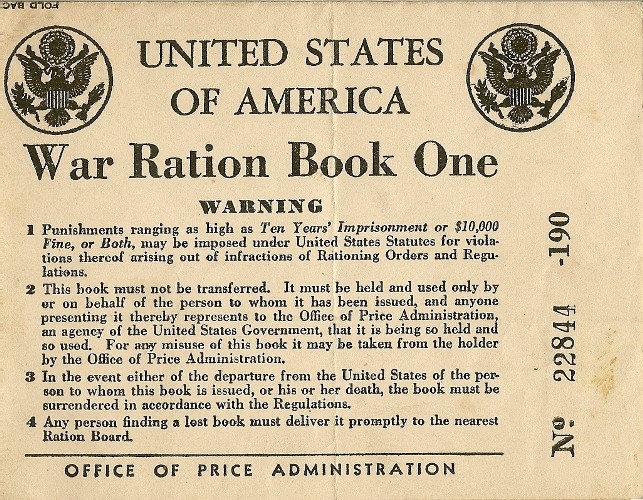March 1, 1942 – Food Rationing Begins Nationwide

Ration books were very valuable and had to be presented to the grocery clerk. Holders like these would help protect the book and its stamps. Gift in Memory of Charles Warren and Norma T. Davis, 2011.389
On this day in 1942, the Office of Price Administration began to enforce food rationing. World War II was a total war, meaning that the entire country had to mobilize to stop the Axis threat. An American military that numbered only 630,000 in 1939 had to fill its ranks quickly. This meant that production of weapons, uniforms, and food had to increase to equip, train, and feed the growing military. As soldiers arrived overseas, they were dependent upon shipments from back home to keep them supplied. In order for the soldiers to remain well supplied, those on the home front had to conserve what they could.
Food was in short supply for a variety of reasons: much of the processed and canned foods was reserved for shipping overseas to our military and our Allies; transportation of fresh foods was limited due to gasoline and tire rationing and the priority of transporting soldiers and war supplies instead of food; imported foods, like coffee and sugar, was limited due to restrictions on importing.

The first of the ration books issued, from the Museum’s Education Collection
Notably, fresh fruit and vegetables were not initially rationed, and in fact, one of the key goals of rationing was to get Americans to cook more with fresh produce while using canned goods for those overseas. Many Americans began planting Victory Gardens, growing their own fruits and vegetables out of both necessity and patriotism. Canning at home was greatly encouraged because it would not count towards ration points.

Because of these shortages, the U.S. government’s Office of Price Administration established a system of rationing that would more fairly distribute foods that were in short supply. Every American was issued a series of ration books during the war. The ration books contained removable stamps good for certain rationed items, like sugar, meat, cooking oil, and canned goods. A person could not buy a rationed item without also giving the grocer the right ration stamp. Once a person’s ration stamps were used up for a month, she couldn’t buy any more of that type of food. This meant planning meals carefully, being creative with menus, and not wasting food. More than 8,000 ration boards across the country administered the program.
Check out the Museum’s onsite Victory Garden and related programming and lesson plans.
Read all of our blog posts related to rationing.
Posted by Gemma Birnbaum, Digital Education Coordinator at The National WWII Museum.




Leave a Reply